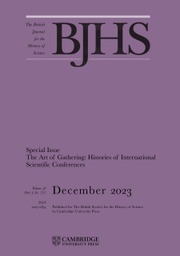This sumptuously illustrated and beautifully produced volume presents essays by fifteen authors on interrelations between music and science during the long sixteenth and seventeenth centuries, the period roughly between the careers of Leonardo da Vinci and Galileo Galilei. Most are based on lectures presented at an online conference held in November 2020. It is fascinating to see how these questions of interrelation have engaged a new generation of scholars.
Rudolf Rasch’s introduction looks back critically on Leonardo and Galileo, whose musical involvements scholars such as Emanuel Winternitz, Stillman Drake, and Claude Palisca emphasized. Rasch tries to right the balance in the other direction but ignores Leonardo’s interesting defence of polyphony and does not weigh the positive significance of Galileo’s musical comments, few as they are. In his contribution, David E. Cohen presents an intriguing early attempt by Franchinus Gaffurius to bring speculative natural science to a vexed issue of music theory: why does the perfect fourth sound dissonant in some contexts but not others? Cohen rightly highlights the novelty of Gaffurius’s attempt (unsatisfactory as it was), which calls for further investigation of contemporary work on the nature of sound, including ongoing commentaries within the Aristotelian context.
Paolo Alberto Rismondo connects the Venetian nobility’s changing support for music theory to their shifting political agenda, for which some music theorists’ Spanish connections (especially Nicola Vicentino) made them suspect; then, too, the nobility increasingly patronized opera. Was it spectacle alone that caused this shift in tastes? Alexander Jakobidze-Gitman illuminates the important theologian Philip Melanchthon’s reactions to music (via his references to Josquin des Prez) in terms of his reactions to the ‘new science’. Carlo Bosi enriches our understanding of Giordano Bruno through his references to music.
Gioia Filocamo presents the striking spectacle of public dissections in Padua accompanied by music. Filocamo connects these music-making German students with their Protestant backgrounds and reasonably speculates that they aimed to mitigate the grimness of the occasion, but one wonders whether their music might have had a larger intent to confront the lifeless bodies with the sonorous intervals that once animated them. One also would like to hear much more about the Protestant connection.
Daniel Martín Sáez offers a helpful account of seventeenth-century operas connected with Galileo and his ideas, an essential resource for anyone trying to understand the response of his times. Sáez extends the work of earlier scholars by discussing eleven operas, most not previously connected to Galileo. Jason Stoessel and Denis Collin investigate elaborate canons as sites of experiment in their study of early scientific thought in seventeenth-century Rome.
Carlos C. Iafelice shows us how the innovative music theorist Giovanni Battista Doni approached an important madrigal by Carlo Gesualdo. Galliano Ciliberti presents a remarkable comparison between Giuseppe Corsi’s mass La luna piena and Lodovico Cari’s fresco of the Virgin standing on a recognizably Galilean moon. Ciliberti argues that this mass includes musical representations of the changing position of the moons of Jupiter as observed by Galileo. Rasch reviews the controversy about the nature of vocal composition that drew in René Descartes, Marin Mersenne and Constantijn Huygens. In another contribution, Rasch describes the tumultuous relationship between Descartes and Isaac Beeckman, especially their disagreements over who influenced whom in a youthful friendship that grew ever more contentious. Though Rasch emphasizes that Descartes thought he was ignorant of practical music, why did he deny so vehemently Beeckman’s claim to have been his teacher?
Leendert van der Miesen gives a valuable treatment of the trumpet – an instrument too much neglected as merely a courtly or martial signaller. Because ‘no instrument demonstrated the presence of harmony within nature so exceptionally well as the trumpet’, Mersenne enlisted it to argue that ‘nature was fundamentally harmonious’ (p. 329). Though in some contexts Mersenne excluded the seventh partial as ‘non-harmonic’, he did include it in others, a troubling discrepancy that one would have liked Van der Miesen to illuminate further.
Roberta Vidic proposes that the neo-Aristotelian terminology of music as a ‘mixed science’ helps us to understand the changing status of harmonics vis-à-vis the other sciences. Granted that the ‘mixed sciences’ may offer another way of understanding the relation of music to traditional quadrivial studies, the question remains exactly what help it gives us and what issues it thereby illuminates. Théodora Psychoyou helpfully enlarges the history of acoustics by including seventeenth-century treatments of ‘noise’ in relation to sound.
The collection ends with ‘The acoustical paradox: how music was unmoored and set adrift from science in the seventeenth century’ by Adam Fix, a chapter from his 2019 dissertation. He argues that, after millennia of close relations, science and music became permanently ‘estranged’ because of what he calls ‘the acoustical paradox’: ‘the more philosophers learned about the mathematics and mechanics of sound, the less they understood about pleasure, consonance, and harmony’ (p. 427). This conflictual sense of ‘paradox’, though, is Fix’s coinage, not that of the historical actors; indeed, coexistence and fruitful tension – rather than contradiction – between expressive music and the dispassionate ‘music of the spheres’ dated back to antiquity. Fix’s argument also ignores that the ‘sciences’ themselves were the children of quadrivial interactions between arithmetic, geometry, music and astronomy. As for estrangement, why, then, did J.S. Bach’s contemporaries compare him to Isaac Newton?
With regret, I must note that this interesting collection is marred by neglecting relevant scholarly writings in the decade before its publication, making it out of date even though just published. Though some of the contributions have up-to-date references, quite a few lack even citations of relevant works of the previous decade. Thus Rasch’s introduction ends his review of ‘more recent studies’ with 2011, though noting that ‘certainly there are more studies that should have been mentioned here. But a selection should have to be made anyhow’ (p. xxxiv). Perhaps, but are these estimable authors prepared to be ignored in their turn for another decade?



